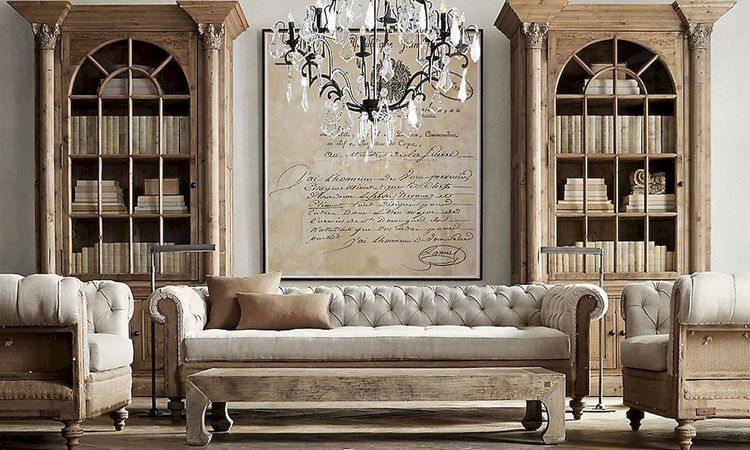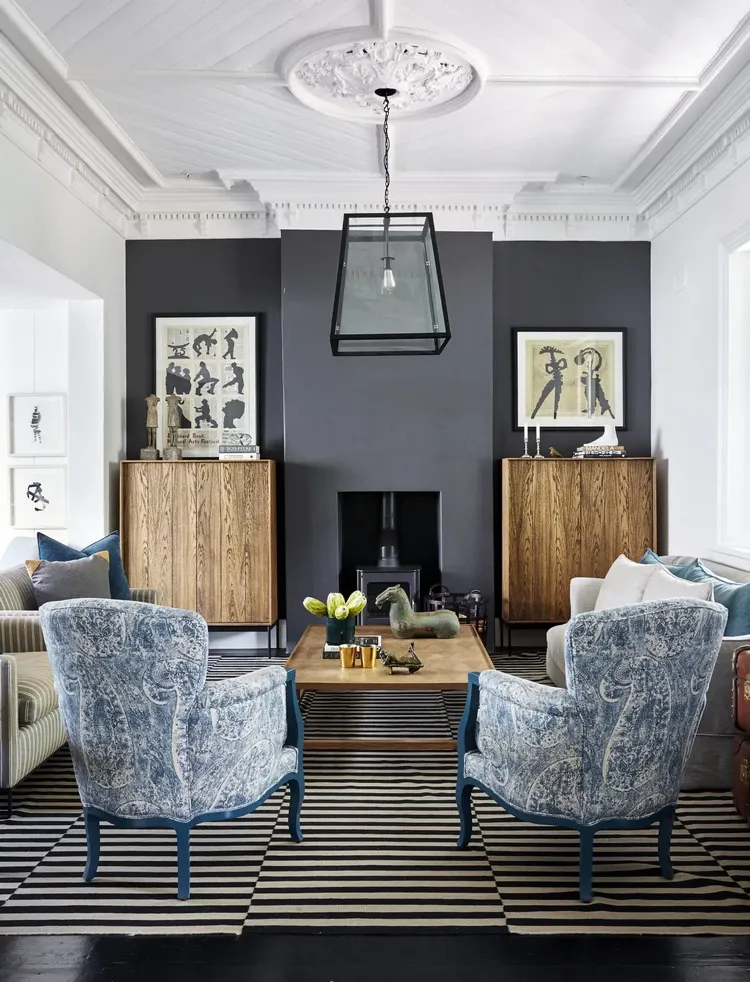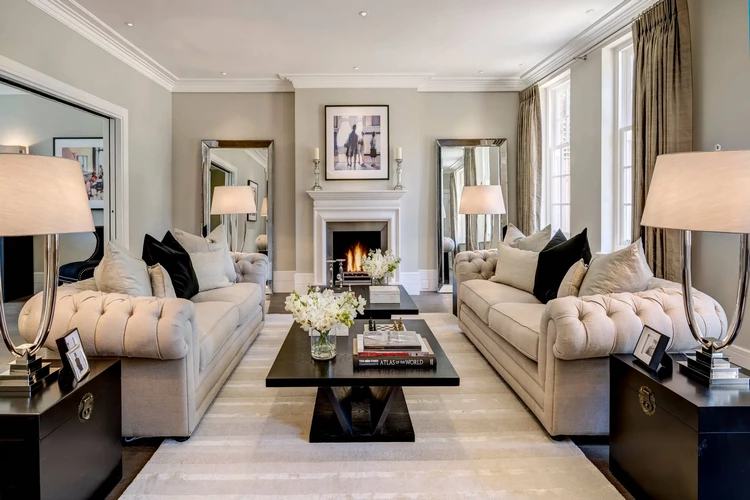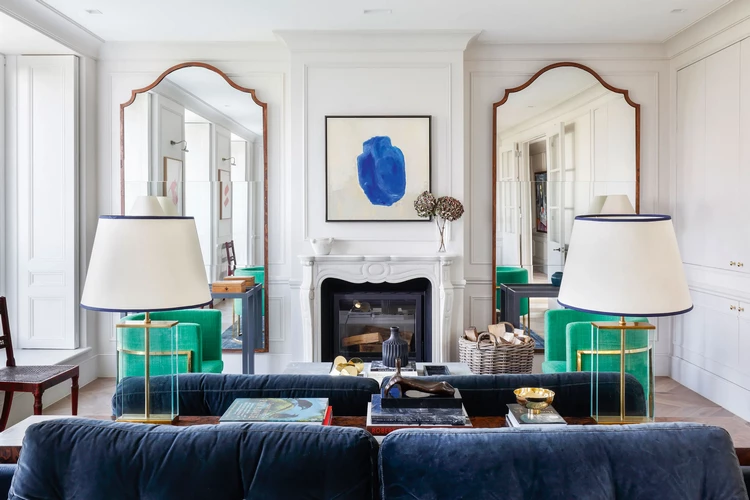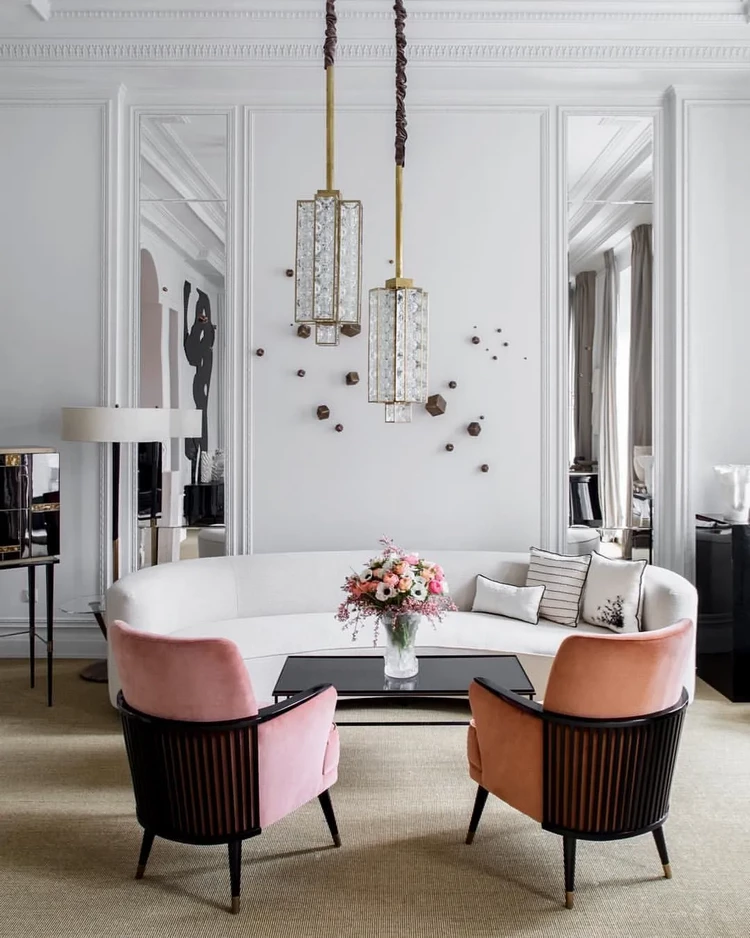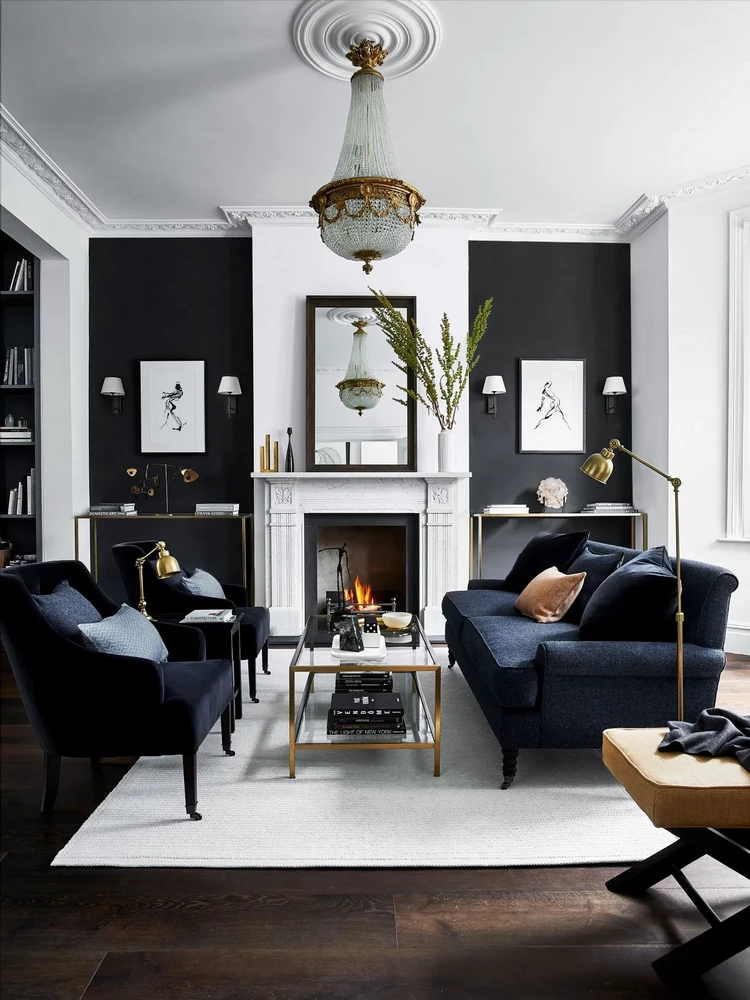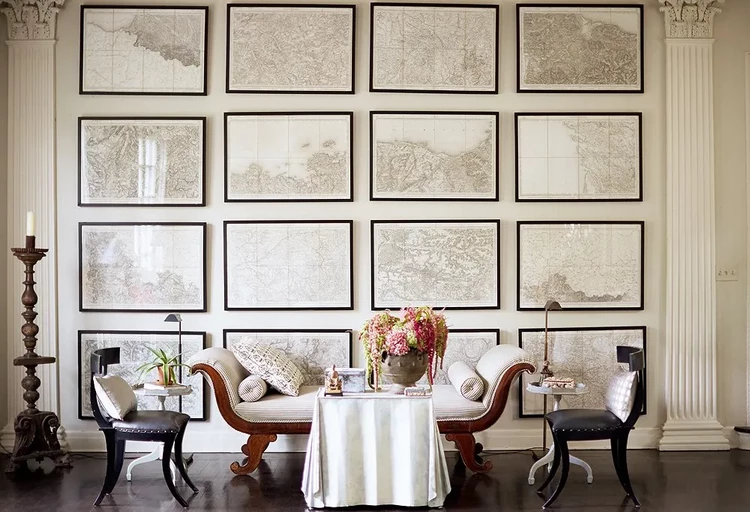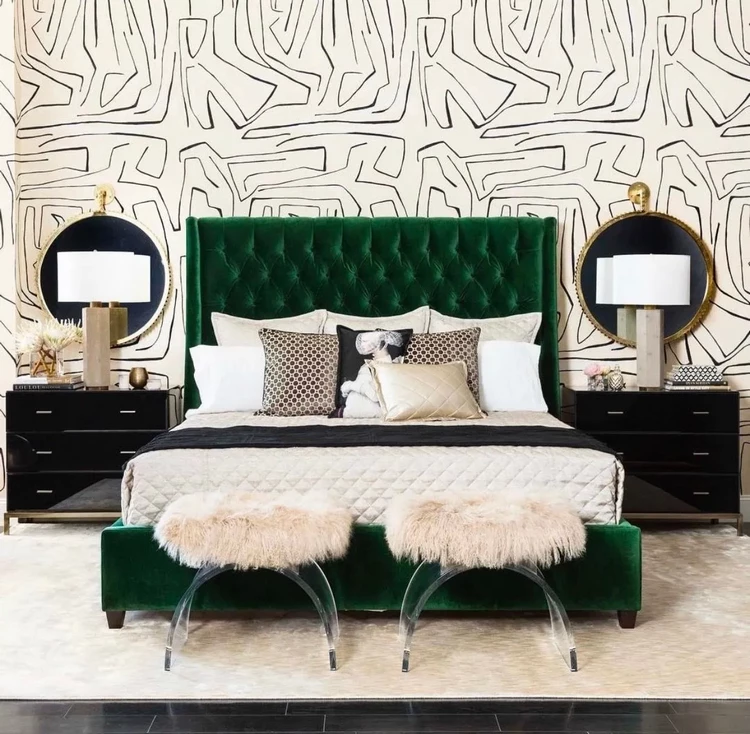What is symmetry in interior design? How does it work and how to use it? Very often people who do not have the skills of a designer can immediately tell whether an interior is successful or not, even if they see it for the first time. Where does this feeling come from? The answer is easy – symmetry! Symmetrical objects look more attractive to us. And it doesn’t matter if it concerns the interior or individual things.
How symmetry affects the design of interior space? Symmetry is, above all, balance. In interiors, one can observe when one half of the room is an almost complete reflection of the other half. Symmetrical interiors look incredibly tidy, smart, calming and relaxing.
How to Use the Principles of Symmetry in Interior Design?
Symmetrical interiors are not necessarily a complete mirror reflection of details. They are based in lines, sizes, heights, colors. Achieving symmetry is very simple: just divide the space into two parts and try to balance it with furniture and other interior items.
How can you achieve balance in the interior space? The principles of symmetry in interior design are most often used in classic style but we often see them in contemporary and minimalist styled homes. If you look around, symmetry in interior design can be found almost everywhere – two identical bedside tables near the bed, a pair of pillows on the sofa in identical covers, two armchairs opposite each other, etc.
You do not have to be a professional designer to create a balanced interior in your home if you follow the main principles of symmetry.
- Choose a focal point – usually this is an element that catches the eye as soon as you enter the room. It could be a fireplace, built-in storage space or some architectural details.
- Visual weight – You can balance the focal point by placing two objects of the same visual weight on either side, for example, a fireplace and two sofas on either side.
- Scale and proportion – Make sure that design elements maintain scale and proportion among themselves and in relation to space. Proportions of 2:3, 3:5, or 5:8 work best.
Design Techniques for Creating Symmetrical Interiors
In the world of interior design, there are many tricks and one of them is symmetry. If you know and follow the rules a symmetrical arrangement of furniture, paintings or decor elements will not look boring or mundane. Despite the fact that this design technique is believed to be suitable for large rooms, symmetry is relevant for small spaces as well. For example, in a small bedroom, such an arrangement of furniture is the most effective way to decorate the interior. The bed will act as an axis, and you can complement it with the same bedside tables and table lamps. Here are some guidelines that will help you:
Finding the Axis – the Compositional Center of the Room
Symmetry is the same arrangement of any objects with respect to the axis. If we talk about the interior, then any object in the room that occupies a central place can be the axis. For example, in a living room most often the focal point is a sofa or fireplace, the bed is the center in a bedroom, etc.
Mirror Effect
A sense of perfect order can be created using “mirror” symmetry, when the axis passes through the middle of the room, and paired objects are located opposite each other. It should be noted that such an interior may be annoying, that is why it is important not to overdo the symmetry and use it sparingly – a little in the decor, lamps, textiles, etc.
Contrasting Colors, Textures and Shapes
One of the main advantages of symmetry is that it can be used to combine textures, shapes and colors that are completely incompatible at first glance. This means that you can use not only identical objects, but also by identical textures and shades.
Symmetrical Does Not Mean Identical
Sometimes it is enough to bring a couple of small objects into the environment to complete the composition and emphasize the symmetry in interior. The objects can be similar in shape, but not identical in color or texture. For example, in a dining room these can be two paintings hanging on the sides of a large mirror.
Also read: Asymmetrical Interior Design Ideas – Find out How to Use This Technique in Your Home!

